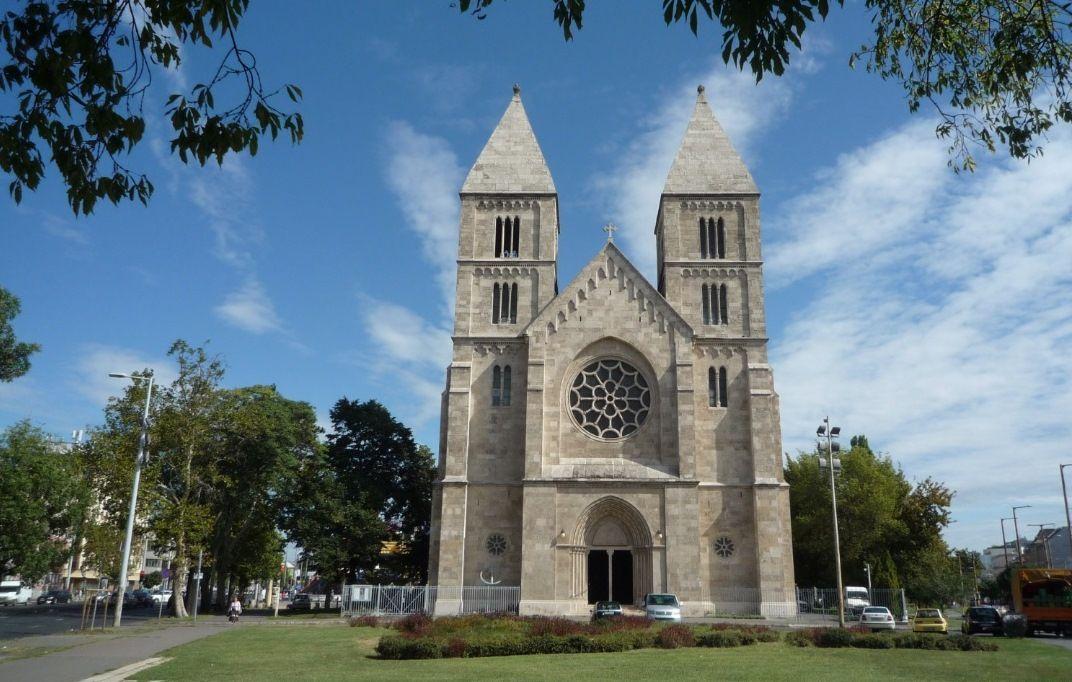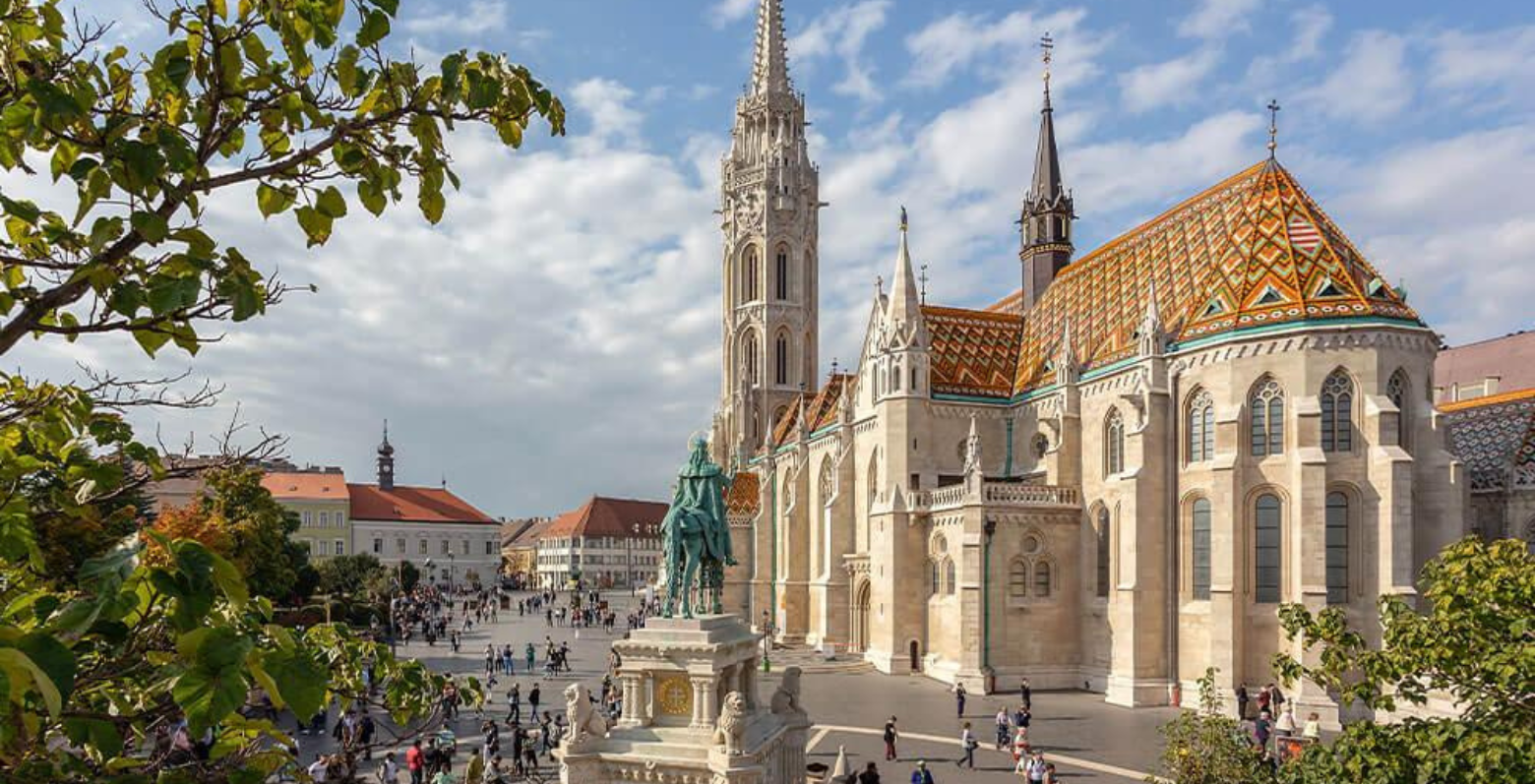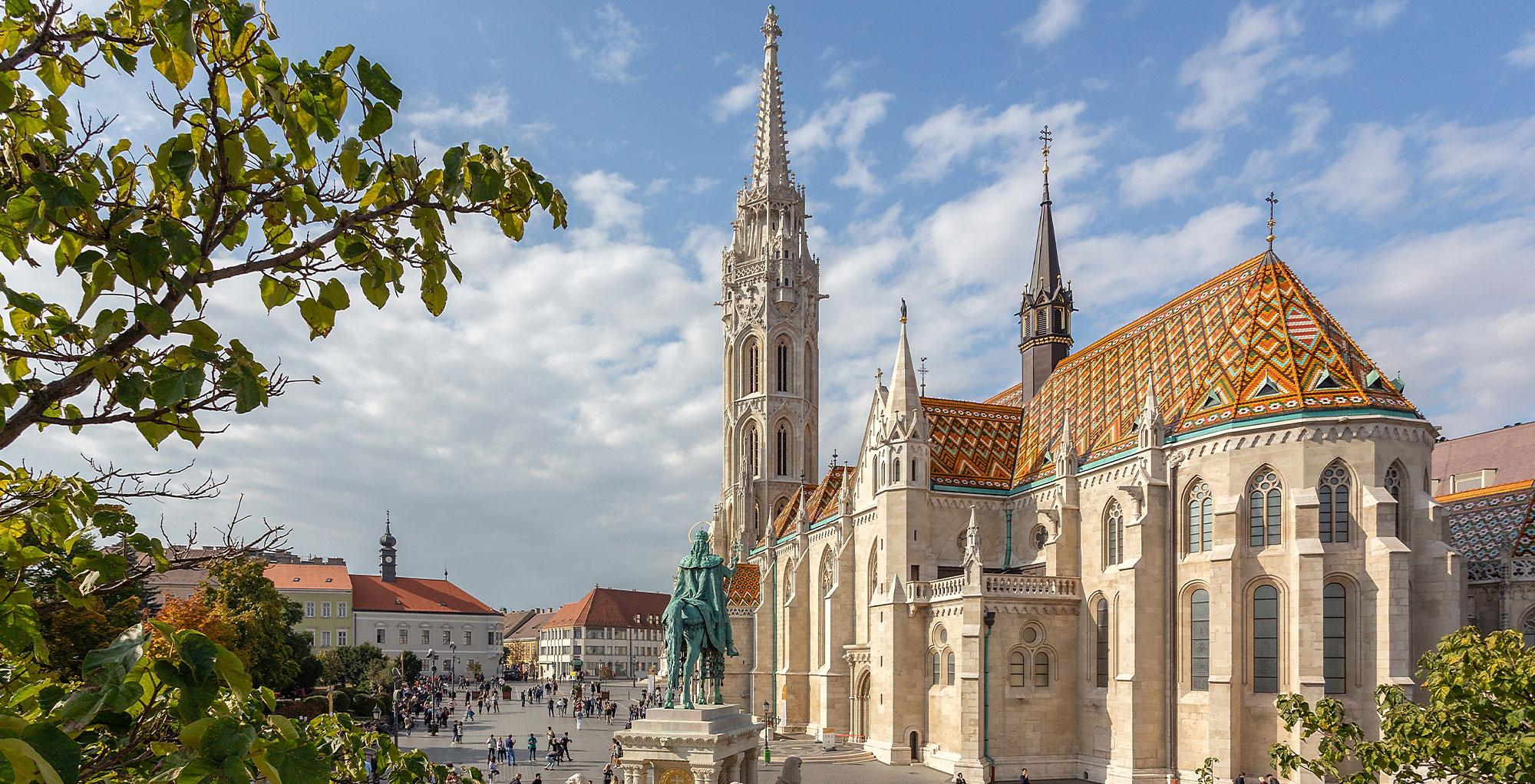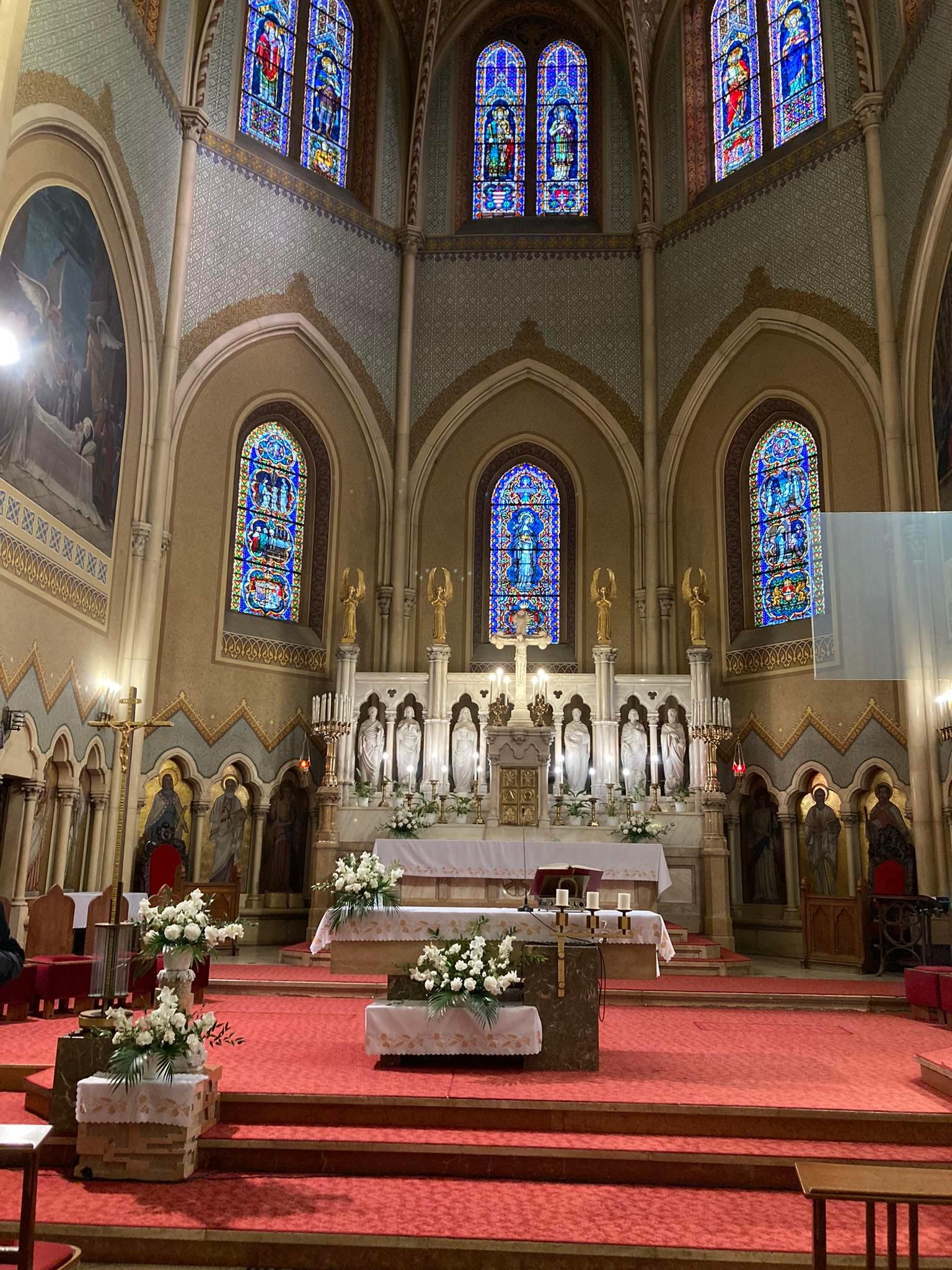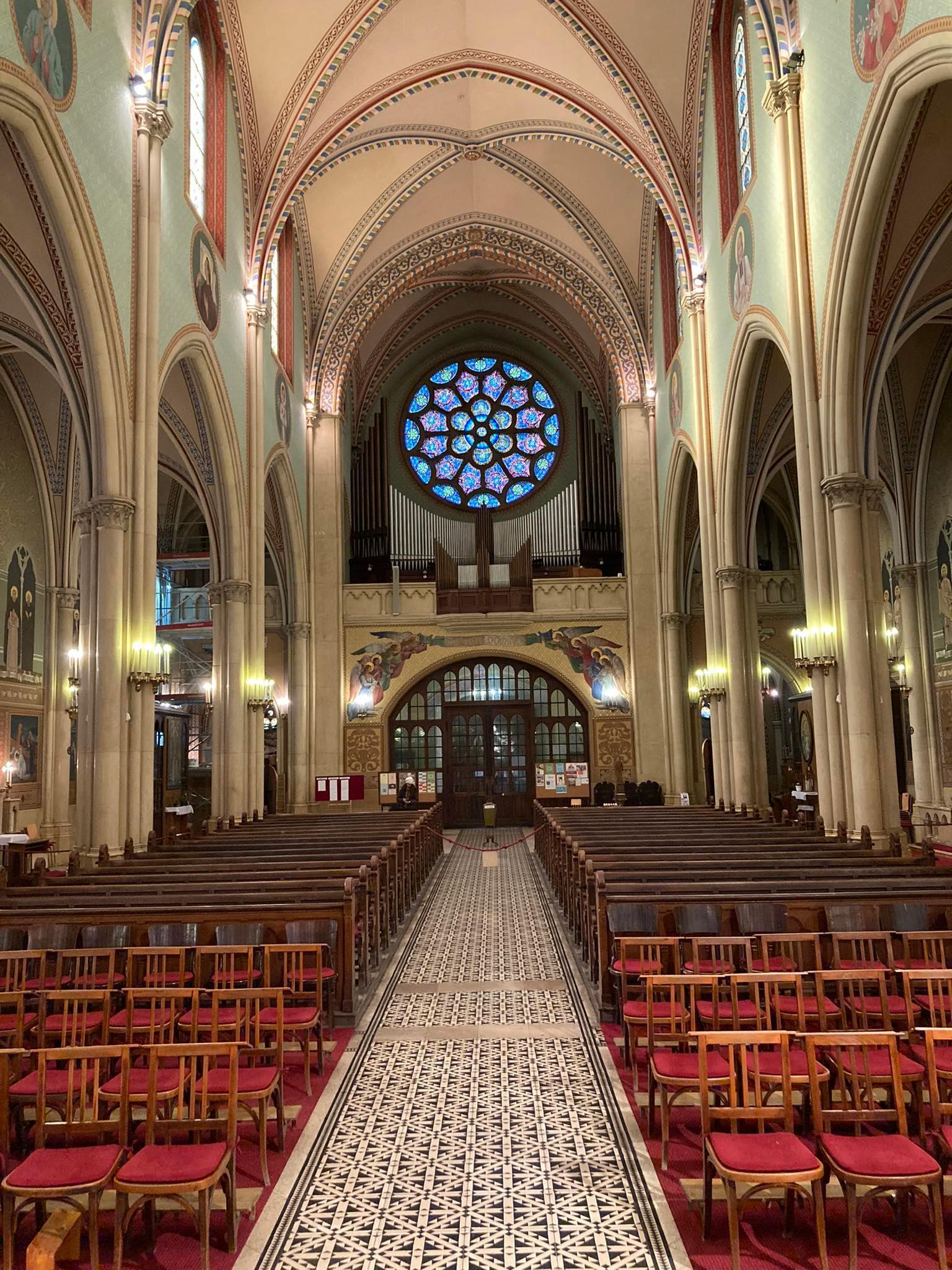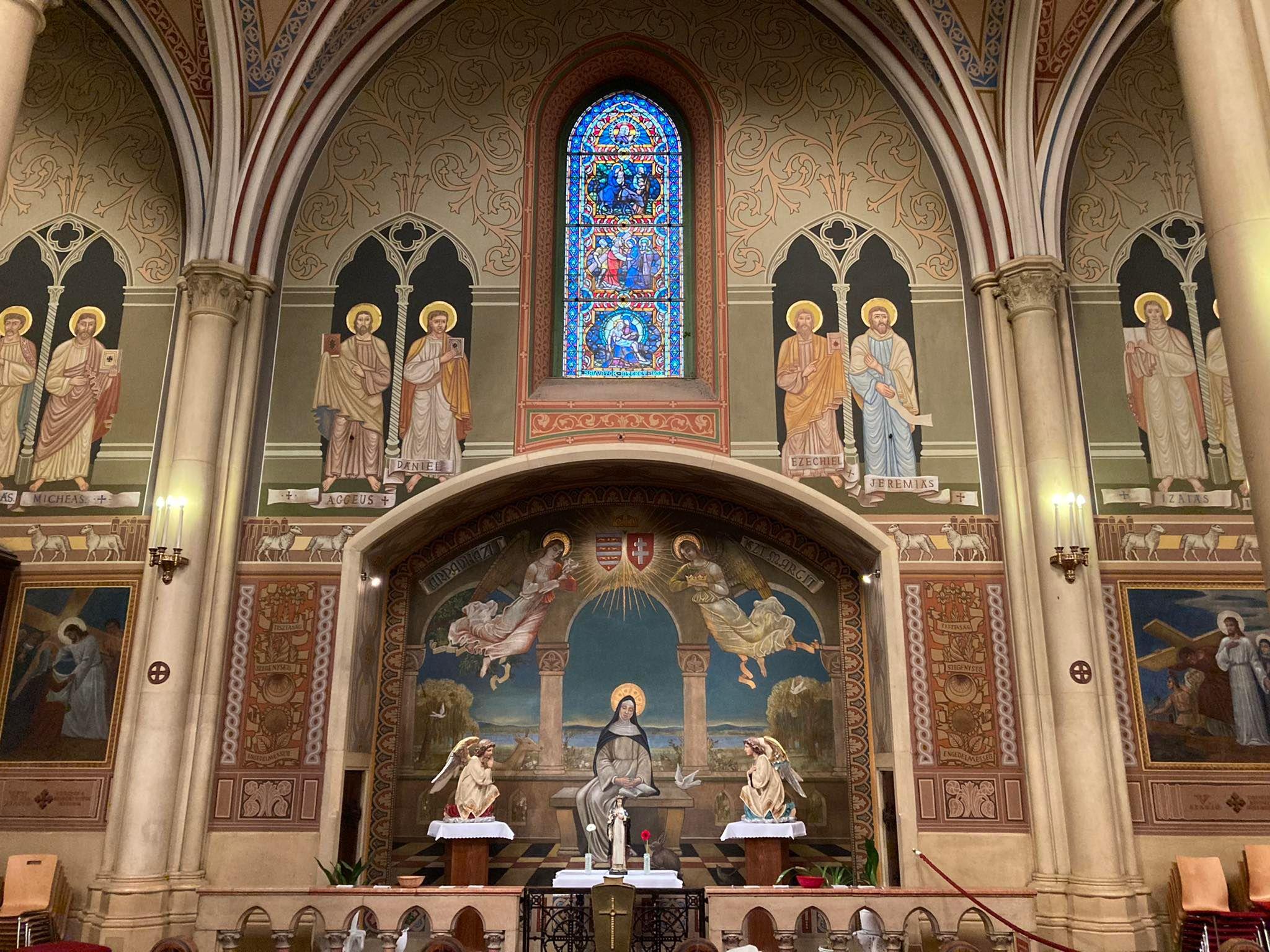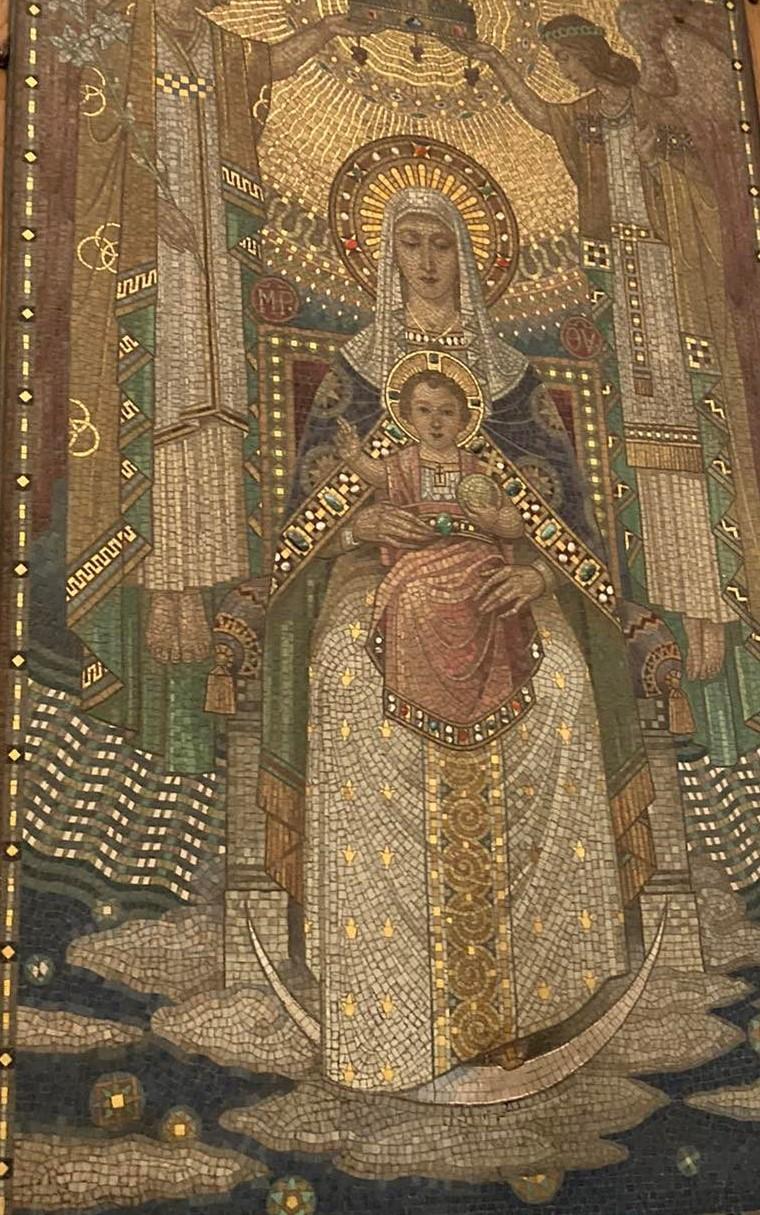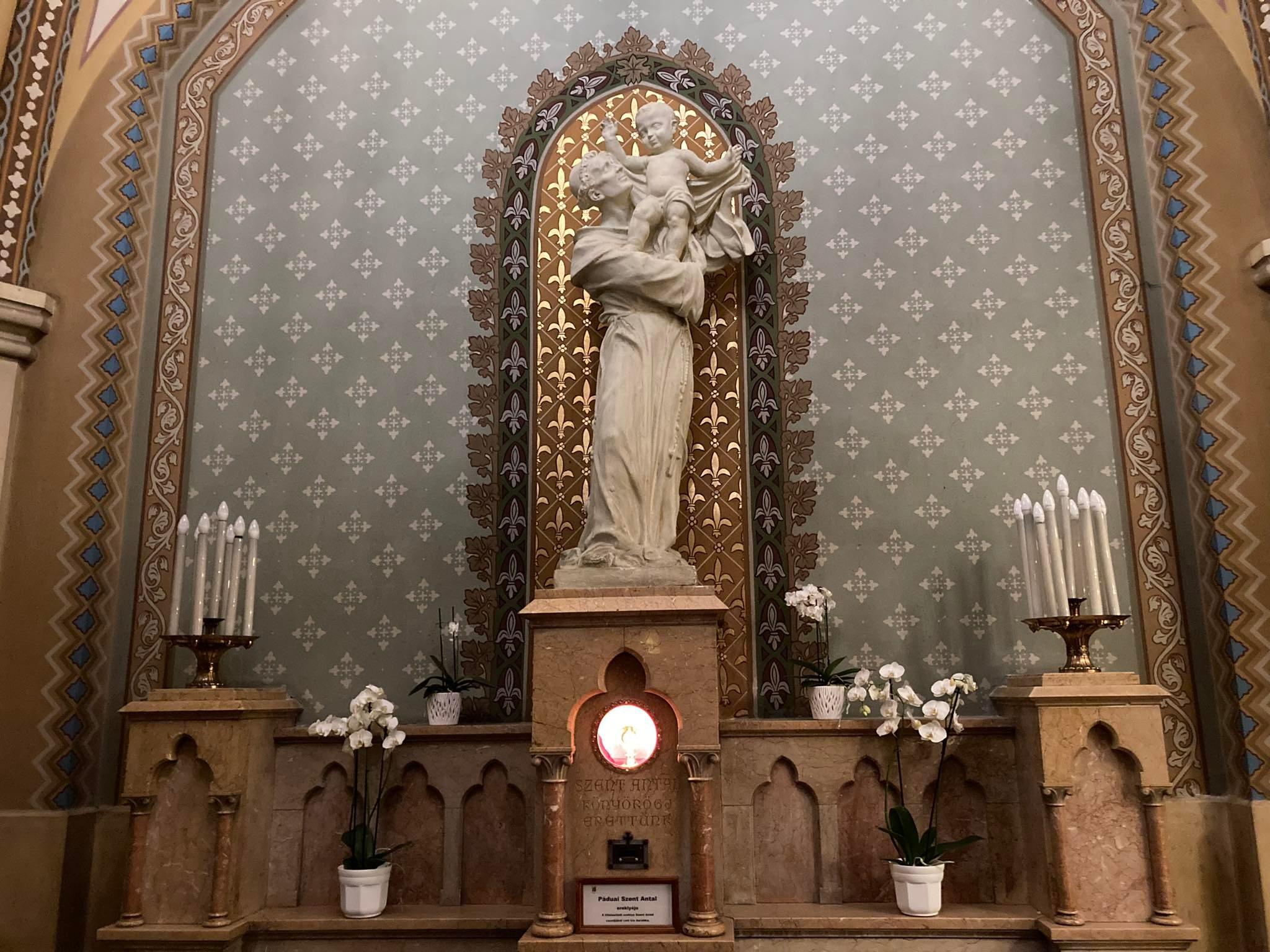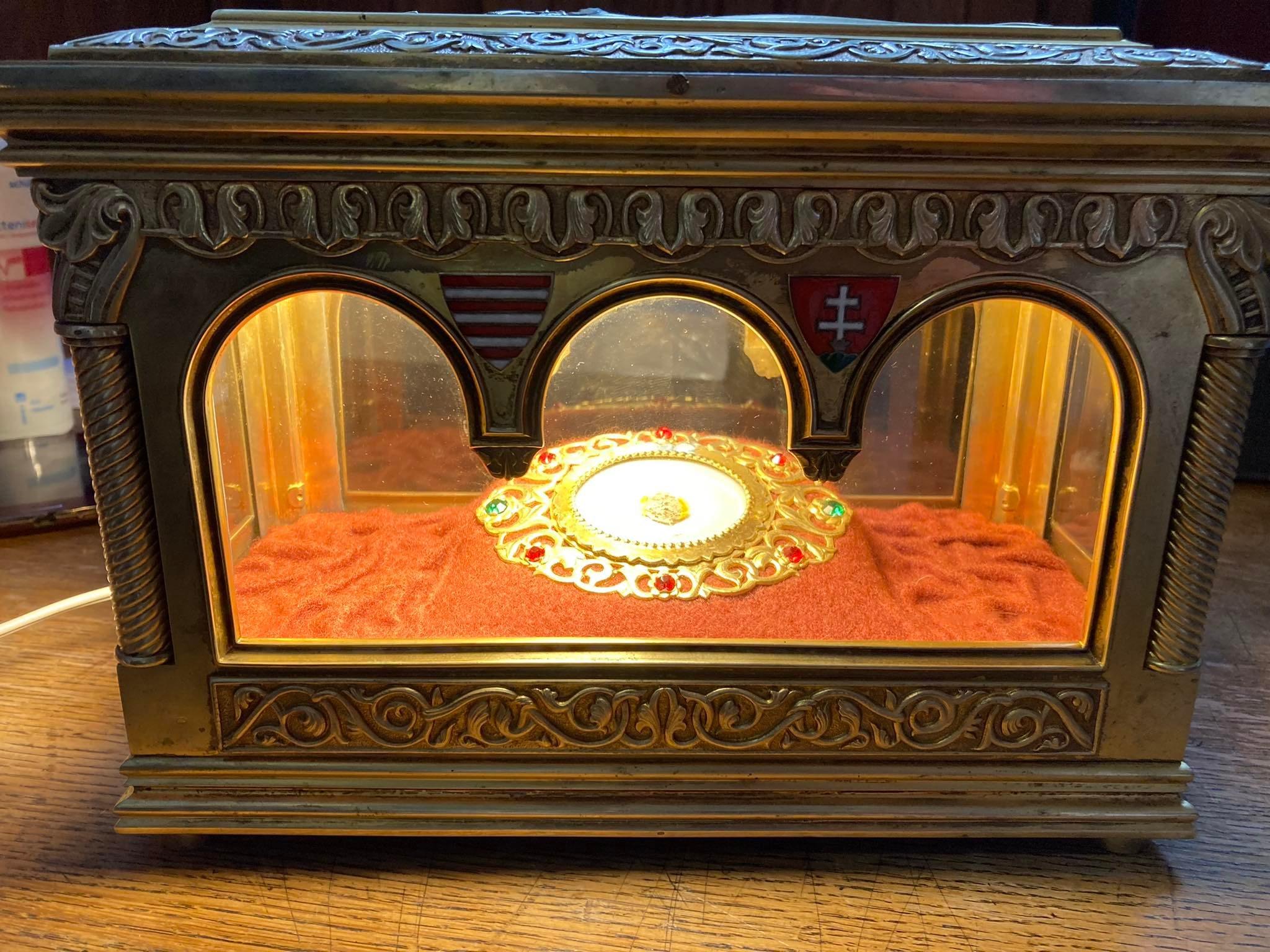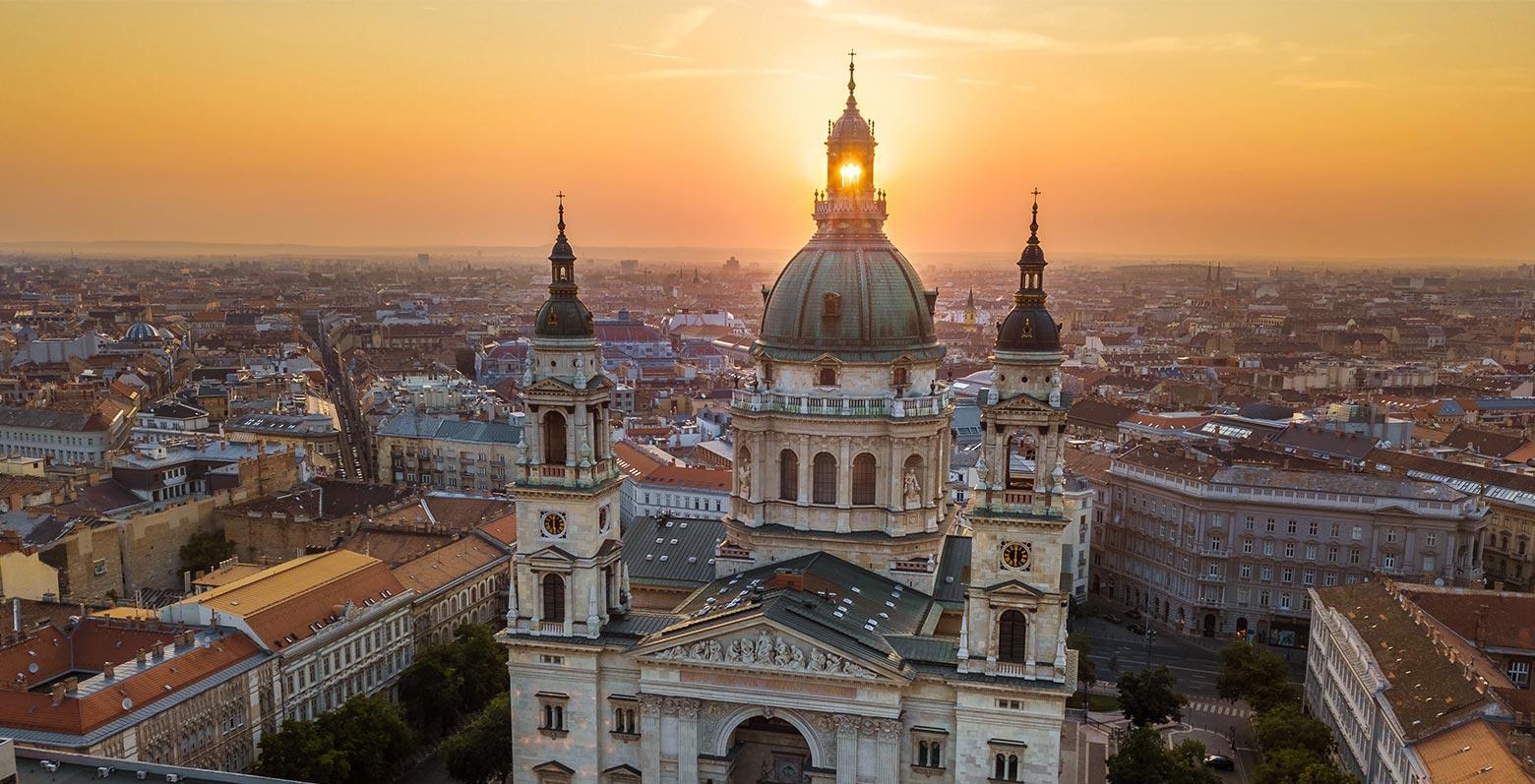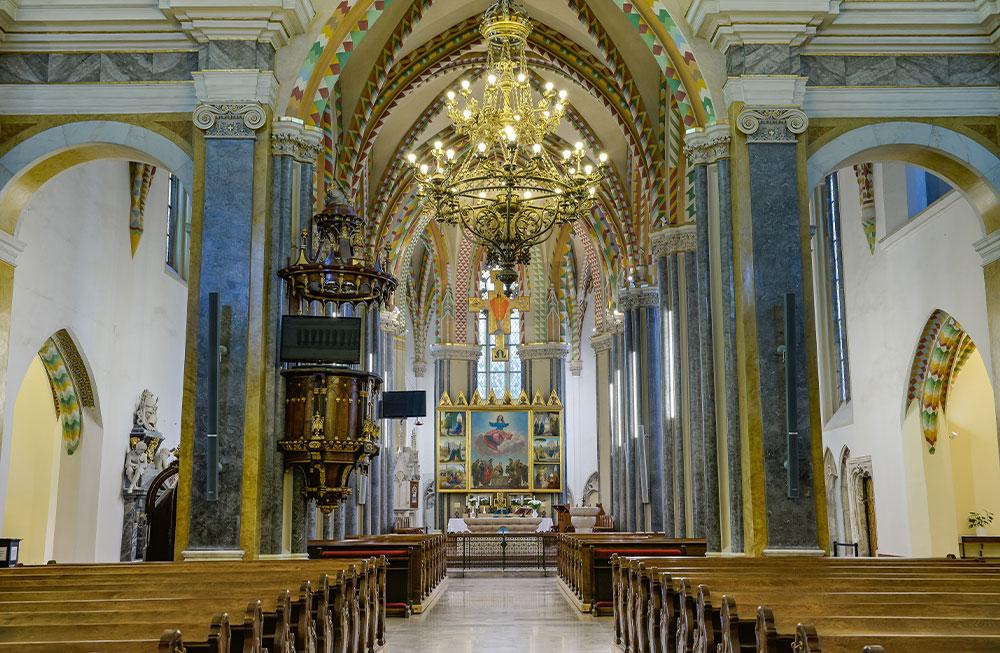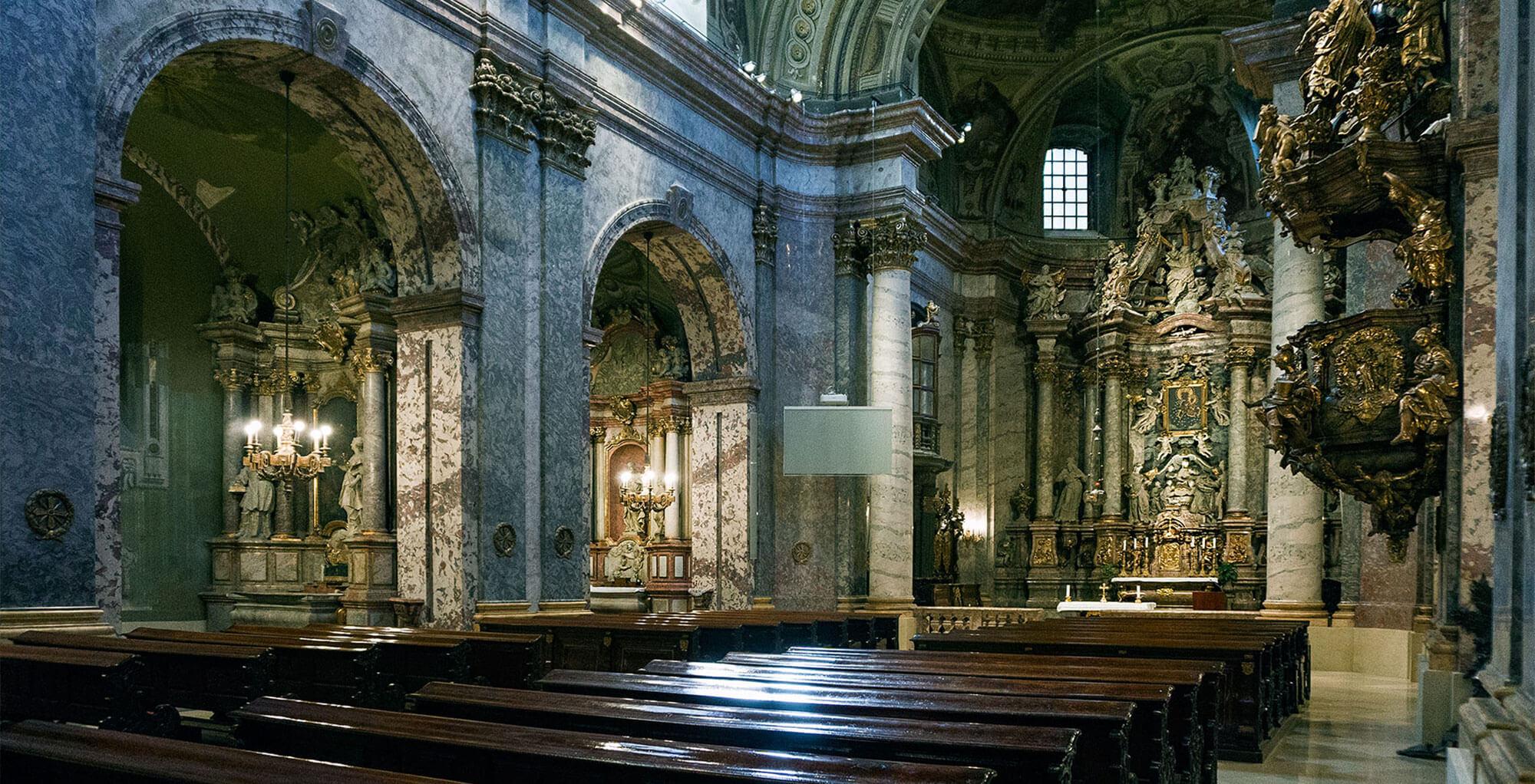The St. Margaret of Árpád Dynasty Parish Church in Újlipótváros is one of the largest churches in Budapest, built by István Möller in 1933 on the model of the church in Zsámbék. The Neo-Gothic style, reinforced concrete structure of the church was built of brick, and the exterior was clad with limestone from Zsámbék. The building, also known as the Lehel Square Church, took the name of St Margaret of Árpad Dynasty only in 1944.
Entering the two-towered, three-nave church, visitors are greeted by a richly decorated square. The entire surface of the east and west walls is decorated with paintings, some of which are historicist ornaments reminiscent of medieval ornamentation. On the west wall, a line of prophets runs from Abraham to John the Baptist, all of whom are heralds of the coming of Jesus Christ in the Scriptures.
On the east wall are images of saints, including the four Western Church Fathers: St. Jerome, St. Augustine, St. Ambrose and St. Gregory. A special feature of the church is the uniquely coloured paintings of the stations on both sides, the work of Henrik Heintz.
And the painting above the choir loft features angels playing trumpets and music, proclaiming the glory of the Lord. On the west side is the altar of the eponymous church, with St. Margaret of Árpád Dynasty contemplating the monastery on the Island of Rabbits. The figure of St. Margaret also appears on the high altar, in the mural in the central part of the apse, she is depicted in the habit of the Dominican nuns, holding a lily and crown in her hands, and scenes from her life are also depicted in the frescoes on the right and left.
The church's beautiful stained-glass windows were made in the workshop of Miksa Róth. The church also houses relics of St. Margaret, St. Anthony and St. Teresa.
Did you know?
The mosaic on the eastern doorway, which combines several iconographic elements is of particular interest. The Virgin Mary is depicted as the patron saint of Hungary, with the Holy Crown on her head but her feet resting on the crescent moon, in keeping with the depiction of the Madonna of the Sickle, which became popular in the 15th century.

